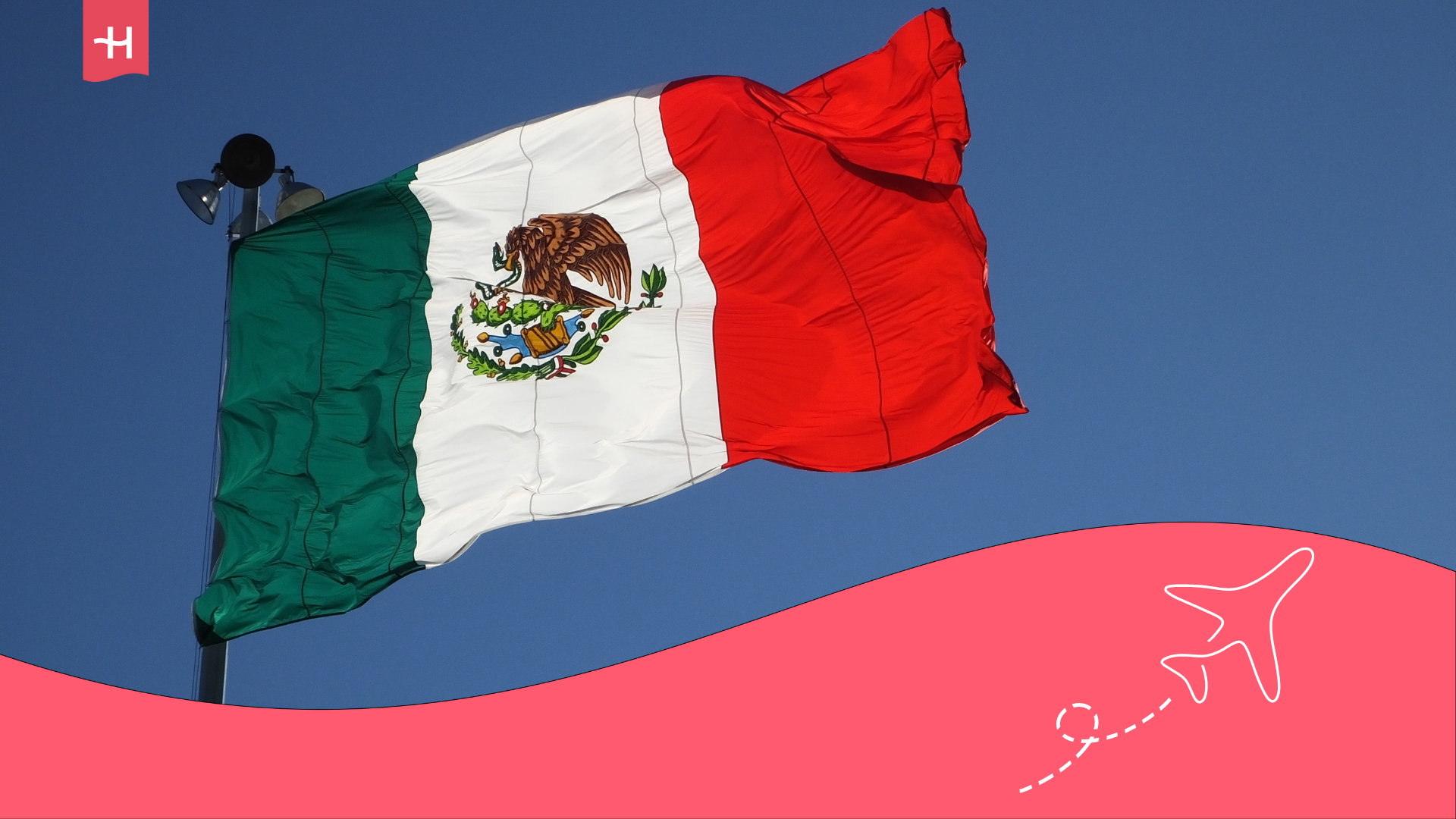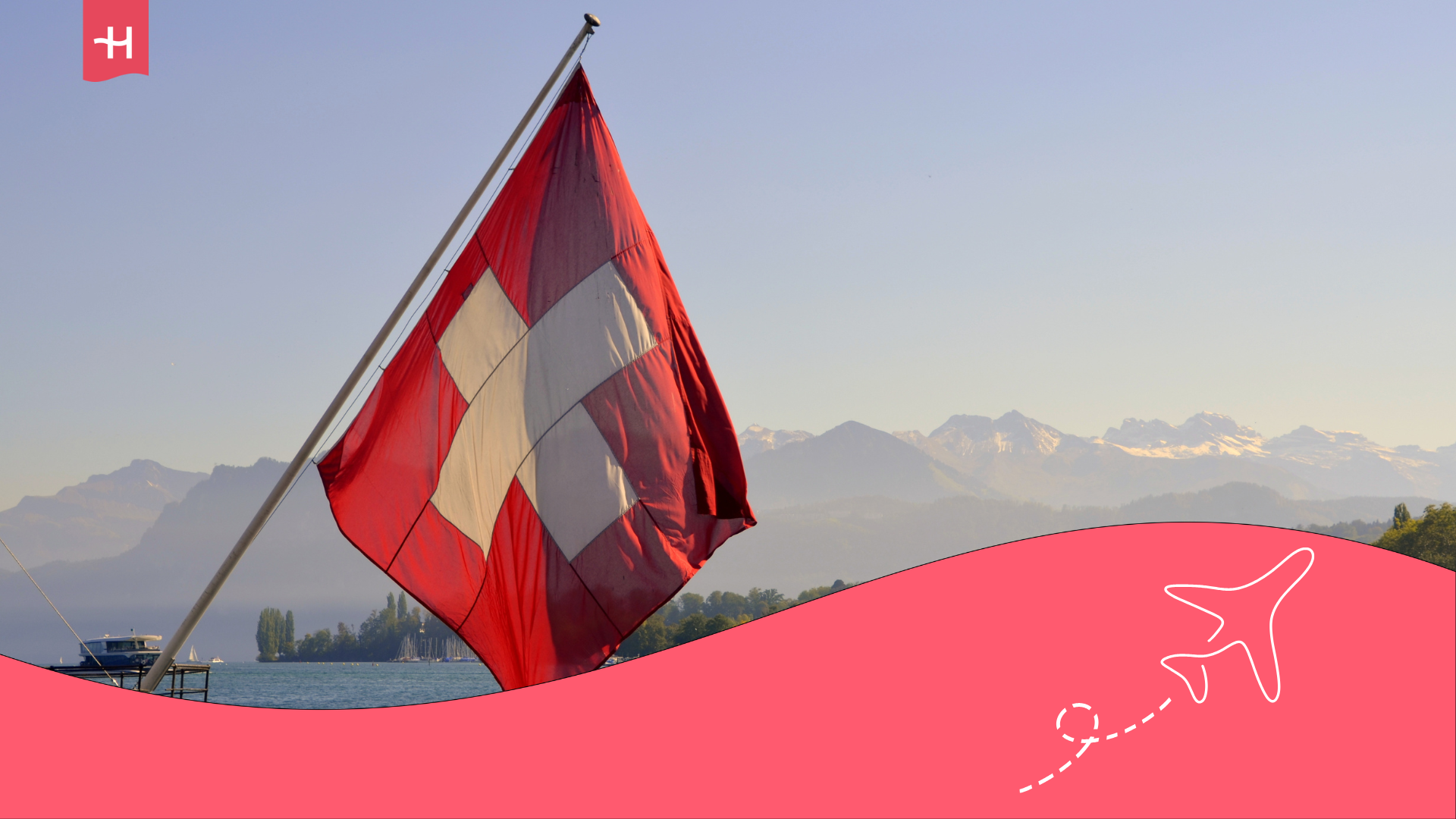Accommodation in the Maldives for long-term stays as a digital nomad
Discover the best accommodation in Maldives for long term stays and make your dream of living in paradise come true.
Who hasn’t dreamed of spending a few days in the Maldives? Just search for a photo on Google and you’ll picture yourself sitting under a palm tree in pure paradise. Can you imagine living there for a while? In that case, it’s wise to start planning and searching for accommodation in Maldives for long-term stays before boarding your flight. If you’re unsure where to begin, reading this guide is a great first step.
When you think of the Maldives, you probably picture iconic overwater villas, turquoise seas, and luxury holidays. Seen that way, it looks like a destination for the privileged only. However, this archipelago of over 1,000 islands in the Indian Ocean offers much more than romantic getaways. In recent years, the Maldives have become a great choice for those who want to spend time surrounded by nature and calm, especially digital nomads, remote workers, creatives, and students.
With flexible immigration policies, long-term accommodation options beyond resorts, and a natural setting that promotes wellbeing, this country provides a unique experience for anyone wanting to work or study from a tropical paradise. So today, we’ll guide you through the best places to stay in the Maldives for several weeks or months. You’ll soon see there’s far more than luxury resorts.
Where to stay in the Maldives: The best options for a longer stay
Before moving to the Maldives, you’ll need to make a few decisions — mainly, which island you’ll live on (something that depends on your activities and length of stay) and which accommodation best suits your budget and needs. Let’s start with that and explore the different housing options in the Maldives.
The first thing you should know is that, while the Maldives are world-famous for their luxury resorts, it’s also possible to stay for a while without paying sky-high prices. Especially if you choose locally inhabited islands instead of resort islands. On the former, life is simpler, more authentic, and affordable.
That said, let’s take a look at the main long-term accommodation options in the Maldives.
Local guesthouses
One of the first options you should consider, especially if you’re a digital nomad, on a tighter budget, or simply wish to experience local life, are the guesthouses on inhabited (non-tourist) islands. They’re usually family homes or small lodgings with private rooms, bathrooms, shared areas, and Wi-Fi.
These places don’t offer luxury facilities like resorts, but they let guests connect with travellers from everywhere, enjoy water sports, go diving, night fishing, and visit uninhabited islands — all for a lower price.
The main difference from resort-style hotels is that guesthouses don’t own their island; they’re located on local islands. Therefore, as a guest, you’ll need to respect the local community and customs. Did you know Islam is practised in the Maldives? That means you’ll have to dress more modestly than at a resort.
Where to find guesthouses in the Maldives? On local islands like Maafushi, Dhigurah, Thulusdhoo, Rasdhoo, or Ukulhas, all reachable by ferry or speedboat from Malé.
- The estimated monthly cost of staying in a guesthouse in the Maldives ranges from €558 ($600) to €930 ($1,000), including breakfast.
Furnished apartments
In cities like Malé (the capital of the Maldives) or Hulhumalé, you can rent a ready-to-move-in apartment. These include a fully equipped kitchen, air conditioning, Wi-Fi, and everything needed for a comfortable stay. You’ll also find some options on tourist islands, though prices there are slightly higher.
- The monthly cost of a studio is around €651 ($700), while a one-bedroom apartment costs between €837–1,209 ($900–1,300).
To find furnished apartments in the Maldives, we recommend checking Facebook groups such as Maldives Long Stay or Digital Nomads Maldives.
Where to stay in the Maldives: Airbnb for seasonal stays
Airbnb is available on several Maldivian islands, so it’s another great option for travellers wanting to stay a while. The biggest selection is in Himmafushi, Dhiffushi, Thoddoo, and Fulidhoo, though they’re not the only ones. If you’ve already chosen an island, simply check Airbnb to see what’s available. As everywhere, many hosts offer discounts between 10% and 30% for stays over 28 days.
What kind of Airbnb accommodation can you find in the Maldives? The range is wide, from studios to beachfront bungalows.
- The monthly cost of staying in an Airbnb in the Maldives ranges from €744–1,488 ($800–1,600), depending on the island and property type.
Coliving in the Maldives
Although the concept of coliving is still growing in the Maldives, some guesthouses and lodgings are beginning to offer packages for digital nomads. These include shared spaces, coworking areas, strong Wi-Fi, and community activities. There are already some coliving options on islands like Thulusdhoo and Rasdhoo.
This type of accommodation suits digital nomads who want to live, work, and connect with like-minded people. Coliving promotes community life and networking, making sure your stay in the Maldives won’t feel lonely.
- The monthly cost of staying in a coliving space in the Maldives ranges from €837–1,302 ($900–1,400), including meals and cleaning.
Student residences: Are they an option for living in the Maldives for a while?
If you’re going to study in the Maldives, you might wonder if student residences exist. Good question. Student housing, like in many cities worldwide, is quite limited and almost non-existent outside the capital. Still, there are some alternatives you can consider.
For example, if you’ll study at the Maldives National University (MNU), the institution can help you find rooms in family houses or private rooms in shared apartments, both in Malé and Hulhumalé. Costs range from €186–465 ($200–500) per month, without services. In this case, the best option is to contact the university or the Maldivian embassy in your country directly to access this type of housing.
At the same time, some guesthouses offer student discounts, such as Newtown Inn in Hulhumalé or Plumeria Boutique Guesthouse in Thinadhoo. Monthly prices start at €372–651 ($400–700), including a shared kitchen and reliable Wi-Fi. Finally, in Malé, Hulhumalé, and Addu City, you can rent a room in long-term apartments. In this case, costs range from €233–558 ($250–600) per month, depending on the area and included services.
Getting internet connection in the Maldives
On many local islands, Wi-Fi in accommodations is decent but can vary. To avoid relying on it, we recommend getting an unlimited data plan. For shorter stays, the best option is the eSIM for the Maldives from Holafly, since you can choose how many days you need.
Important: If you are a frequent traveler and want to stay connected without worrying about expensive roaming or looking for a new SIM at every destination, Holafly’s subscription plans are for you. With a single eSIM, enjoy internet in more than 160 countries for a fixed price and no surprises on your bill. Travel without limits and connect easily and securely! 🚀🌍

Where to stay in the Maldives: The best islands for a longer stay
Out of the more than 1,000 islands forming the Maldives, only around 200 are inhabited. Still, that’s a lot when deciding where to live. Don’t worry — the list shortens when considering affordable housing, good internet, basic services, and ferry or speedboat links with Malé. Of course, we’ll exclude resort islands, as they’re better for honeymoons or short getaways.
After applying that filter, here’s a selection of the best islands to live in the Maldives for a while.
Maafushi
Maafushi is the most popular and best-connected local island in the Maldives. It’s also the most developed for tourism, offering affordable accommodation, a lively international traveller community, and daily ferries to Malé.
Maafushi sits in Kaafu Atoll, very close to Malé. It’s small and divided into three areas: the tourist zone, the residential and commercial area, and a prison located at the island’s southern tip (closed to the public, of course). It’s ideal for experiencing local life but also enjoying tourist freedoms like relaxing at the bikini beach. The island attracts travellers from everywhere, making it one of the best places to stay in the Maldives.
In Maafushi, you’ll find plenty of guesthouses, Wi-Fi cafés, diving centres, public beaches, supermarkets, ATMs, and better prices compared to other islands. Ferries depart daily for Malé, taking about ninety minutes, or you can take a speedboat reaching the capital in just thirty minutes.
Accommodation in Maafushi
Some long-stay options in Maafushi include apartments and Airbnb rooms (around €744 ($800) per month), as well as guesthouses. Many properties adapt rooms for longer stays, offering kitchens and desks. For guesthouses, we recommend Ocean Vista, Sunrise Beach, and Velana Beach Hotel, which provides discounts for stays longer than 14 nights.
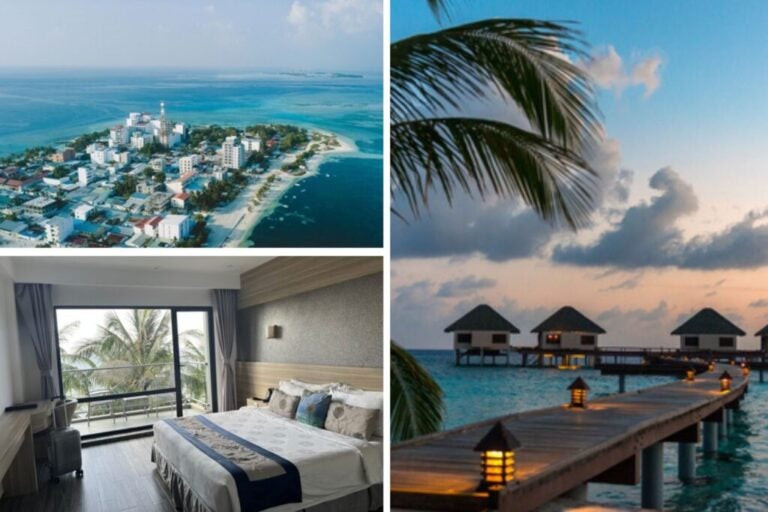
Thulusdhoo
Thulusdhoo is a more relaxed island with an international vibe and the go-to spot for surfers in the Maldives. You might not know it, but this paradise archipelago is home to some of the world’s best waves. Among all its islands, Thulusdhoo is considered one of the top surfing destinations in the Maldives. So, if you travel with your board as well as your laptop, start looking for a place here.
For digital nomads and remote workers, Thulusdhoo offers several coliving spaces, strong internet, cosy cafés, and a small yet active community. Accommodation is far more affordable than in luxury resorts, making it ideal for focusing, surfing, and living close to nature.
Accommodation in Thulusdhoo
Though small, Thulusdhoo offers plenty of accommodation choices. There are about twenty guesthouses, hotels offering long-stay discounts, and coliving spaces.
Recommended guesthouses include Samura Maldives, Villa Kudì, and Eden Blue. For coliving, try Salt Beach House Maldives—a favourite among surfers and remote workers—and Cowork Surf Maldives, part of the Cowork Surf community. Staying at these costs around €930 ($1,000) per month.
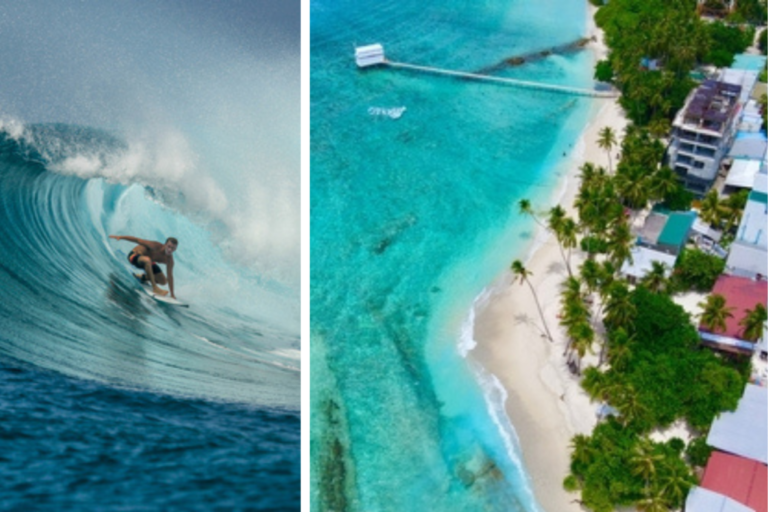
Where to stay in the Maldives: Dhigurah
We continue exploring the best islands to stay in the Maldives, and now it’s Dhigurah’s turn. This local island lies in the southern part of South Ari Atoll and is famous for being home to the whale shark. It’s a true paradise for lovers of marine life and beaches, featuring one of the longest white-sand stretches in the Maldives.
If swimming with whale sharks isn’t on your list and you just want a peaceful place to work surrounded by nature, Dhigurah is perfect. It’s not a party or crowded island, but it’s great for anyone who values calm and simplicity.
The island is about 4 km long and only 300 metres wide. Around 600 people live here, mainly in the north, and most depend on fishing. The rest of the island features fruit and vegetable farms and thick tropical vegetation. It’s home to some of the world’s top diving spots and is often described as the most idyllic island in the Maldives.
Now, let’s focus on living and working here. Internet connectivity is good, though it’s wise to have a data plan instead of relying on Wi-Fi. You’ll find small shops and local cafés where you can work comfortably. The digital nomad community is smaller than on other islands, making it ideal for those who prefer solitude and quiet surroundings.
Accommodation in Dhigurah
Dhigurah is gradually adapting to tourism, as it’s not one of the most developed Maldivian islands. Still, there are several simple hotels and guesthouses offering fair prices for longer stays. We especially recommend TME Retreats, Bliss Dhigurah, and Boutique Beach, all excellent options for digital nomads.
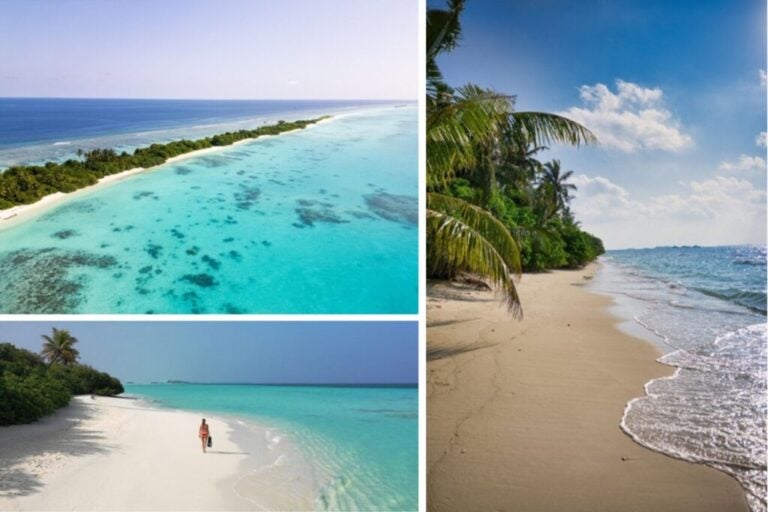
Malé and Hulhumalé
For those who prefer city life, Malé (the capital) and its neighbour island, Hulhumalé, can be good places to stay in the Maldives. They’re busier but offer various apartments, cafés, coworking spaces, and direct airport access. From here, you can easily reach other local or tourist islands across the archipelago.
Hulhumalé is the island hosting Malé’s airport (Velana International Airport), the largest in the Maldives and the main entry point for most travellers. It’s a local, mostly residential island, not overly touristy, but with several three- and four-star hotels. It’s a great base for long stays, letting you take excursions to other islands in your free time.
Malé, on the other hand, is the capital and the perfect place to meet Maldivians in their local environment. The island has about 200,000 residents, mosques, parks, markets, cafés, restaurants, and plenty of accommodation options. Although tourist attractions are limited, it’s ideal if you enjoy city life and want the country’s best internet coverage.
Accommodation in Malé and Hulhumalé
Both Malé and Hulhumalé have great choices for digital nomads, students, and long-stay travellers. For example, Six In One Hotel, a boutique-style guesthouse, and Novina Hotel (in Malé), or UI Inn, Hulhumalé Beach Hotel, and Huvan Beach Hotel in Hulhumalé.

Frequently Asked Questions about where to stay in the Maldives
Yes, absolutely. There are over 200 inhabited local islands where you can stay in guesthouses, apartments, or Airbnbs. They’re far more affordable and authentic than resorts, perfect for long stays.
Generally, yes. Islands like Maafushi, Thulusdhoo, or Hulhumalé have reliable Wi-Fi. However, it’s smart to travel with an unlimited data eSIM as backup, especially in remote areas or when travelling by ferry.
You can take public ferries (slower but cheaper) or private speedboats connecting the most popular islands with Malé daily. Domestic flights are also available for longer distances.
Yes, there’s a growing community of digital nomads. Islands like Thulusdhoo and Maafushi are starting to attract freelancers, surfers, and remote workers from around the world. Coliving spaces are developing quickly, and many online groups share experiences and tips.





 Language
Language 


















 No results found
No results found





